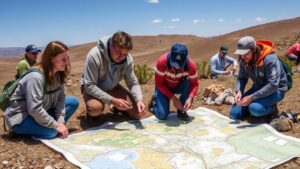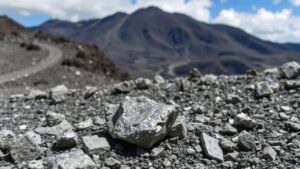Agricola’s Methods for Managing Waste Rock and Tailings Piles
Agricola’s Methods for Managing Waste Rock and Tailings Piles
The management of waste rock and tailings piles is crucial in the mining industry, as improper handling can lead to environmental degradation, economic losses, and pose health risks. Georgius Agricola, a 16th-century mining engineer, laid foundational work in the field of mining and mineral processing, particularly in his renowned book, De Re Metallica. This article delves into Agricolas methods for managing waste rock and tailings piles, highlighting their relevance and application in contemporary mining practices.
Understanding Waste Rock and Tailings
Waste rock refers to the material that is excavated during the mining process but is not economically suitable for processing. Tailings, on the other hand, are the residual materials left after the extraction of valuable minerals from ore. Both waste rock and tailings can present environmental challenges, including acid mine drainage, heavy metal leaching, and landscape disruption.
Agricolas Principles of Waste Management
Agricola emphasized several principles in managing waste materials, many of which remain applicable today. His methods included efficient separation of valuable minerals, proper disposal techniques, and the importance of environmental stewardship.
- Efficient Separation: Agricola advocated for thorough sorting of mined materials to maximize the recovery of valuable minerals. This approach not only reduces the volume of waste generated but also ensures that economically valuable elements are not discarded.
- Designated Waste Areas: Agricola recommended the establishment of designated areas for the disposal of waste rock and tailings. e areas should be strategically chosen to minimize environmental impact and facilitate effective management.
Case Study: Historical Applications
A historical example of Agricolas methods in action can be seen in the management of tailings in the silver mines of Freiburg, Germany. Here, miners adopted Agricolas techniques of stack pebble and sand tailings, ensuring that the materials were sorted before disposal. This method not only reduced the volume of tailings but also improved water management by directing the runoff away from areas that could become contaminated.
Modern Applications of Agricolas Methods
In contemporary mining operations, Agricolas principles can be observed in various practices:
- Tailings Management Facilities (TMFs): Modern TMFs are designed based on the principles of waste containment outlined by Agricola, ensuring that tailings are securely stored and monitored to prevent environmental contamination.
- Reclamation Techniques: The reclamation of mined lands often involves methods that Agricola suggested, such as re-vegetation and soil amendment, which aim to restore the ecological balance and limit environmental impact.
Regulations and Standards
Modern mining operations must adhere to stringent regulations concerning waste management, influenced by foundational works such as Agricola’s. Regulatory bodies impose standards for the management of waste rock and tailings, focusing on:
- Environmental Compliance: Ensuring that mining operations meet local and international environmental standards to prevent contamination.
- Health and Safety Regulations: Protecting workers and surrounding communities from potential hazards associated with waste materials.
Challenges and Controversies
While Agricolas methods provide a solid foundation, the mining industry still faces significant challenges in waste management. Issues such as climate change, resource scarcity, and increasing public scrutiny can complicate the implementation of effective waste management practices. Critics argue that many mining companies prioritize profits over sustainable practices.
Conclusion and Actionable Takeaways
Agricola’s methods for managing waste rock and tailings piles are a testament to the importance of thoughtful waste management in mining. His principles of efficient separation, designated waste areas, and environmental stewardship continue to inform modern practices. As the mining industry evolves, integrating these methods can lead to more sustainable operations that consider both economic viability and environmental responsibility.
- Mining companies should review and adopt Agricolas efficient waste handling techniques to reduce their environmental footprint.
- Investments in technology and infrastructure for proper waste separation and disposal can yield long-term benefits.


